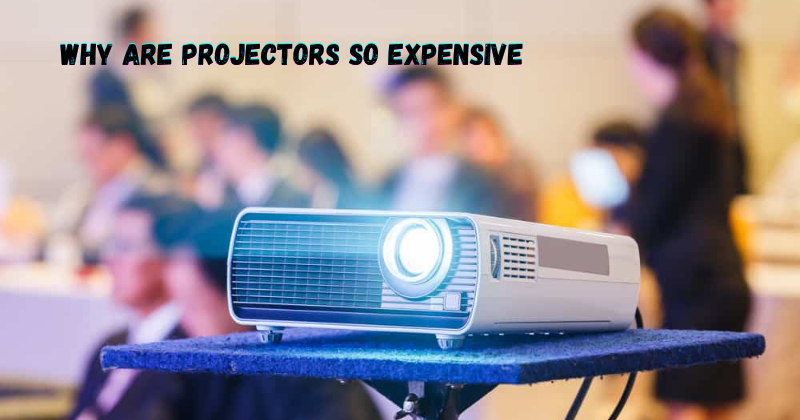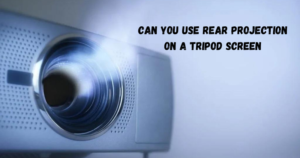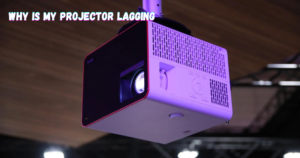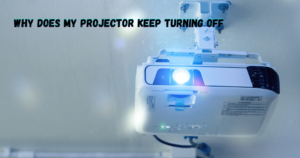Projectors are highly sought-after devices, revered for their ability to display large, high-quality images in various settings. Several factors influence the substantial cost of projectors. Advanced technological components, such as high-resolution lenses, intricate display systems, and cutting-edge image processing, significantly contribute to their expense.
The development and integration of innovative features, like 4K resolution, enhanced brightness, and contrast ratios, often escalate manufacturing costs. Additionally, compact design elements, portability, and the inclusion of specialized functionalities further elevate the price.
Research and development investments, including advancements in lamp or laser technology, play a pivotal role in the cost structure. The answer lies in several factors that contribute to their higher price point. In this article, we will explore some of the key reasons behind the cost of projectors and gain a better understanding of why they can be quite pricey.
Why are Projectors so Expensive?
This question is frequently asked by consumers looking to purchase a projector for their home theater, office presentations, or other purposes. The answer lies in the significant investment required in developing and manufacturing these devices. Let’s delve deeper into the factors that contribute to the high cost of projectors.
Advanced Technological Components
Projectors are complex optical systems that use various technologies, such as LCD, DLP, or LCoS, to project images onto a screen. The quality of the image projected depends on the type and quality of these components. Advanced technologies, such as 4K resolution and HDR (high dynamic range), significantly increase manufacturing costs.
Additionally, lenses and display systems with higher resolutions often command a premium price tag due to their intricacies in design and production. Comparable price range can be seen in high-end television sets, further highlighting the cost of advanced technological components. Bright laser light projector technologies, which offer superior brightness and energy efficiency, are still in their nascent stages, making them even more expensive.
Innovative Features
Projectors are increasingly incorporating new and advanced features to enhance their functionality and performance. These include features such as wireless connectivity, integrated speakers, and 3D projection capabilities.
These cutting-edge functionalities require additional research and development investments, leading to a higher cost for projectors that have them. Moreover, the inclusion of these features also adds to the complexity of the device, further driving up its price.
Use More Energy Than Televisions
Projectors consume a lot of energy to produce bright, clear images, especially when compared to televisions or monitors of similar size. The powerful lamps and intricate display systems used in projectors require more power than standard displays, contributing to the higher cost.
Additionally, many users leave their projectors on for extended periods while using them for presentations, watching movies, or playing games, resulting in increased energy consumption. Mini projector are also option if you don’t afford the big one.
Projectors Offer High Resolution
One of the main selling points of projectors is their ability to provide high-resolution images, often surpassing those of televisions or monitors. The higher resolution requires more advanced components and technologies, which add to the cost. Furthermore, as technology continues to evolve, manufacturers are constantly striving to improve the resolution capabilities of projectors, leading to significant investments in research and development.
Most projectors on the market today offer at least 1080p resolution, with high-end models boasting 4K resolutions, contributing to their higher cost. Though the maximum resolution is fixed in projectors, still, it gives you the power to adjust.
They Are Long-Term Investments
Compared to other display devices, such as televisions or monitors, projectors are typically considered long-term investments. This is because they have a longer lifespan and can often be upgraded with new components or features over time. As a result, manufacturers often price projectors higher to make up for the cost of research and development spent on improving the product’s longevity.
They Are More Portable
Projectors are designed to be portable, allowing users to take them on the go for presentations or movie nights. This portability is achieved through a compact and lightweight design that often utilizes specialized materials, such as carbon fiber, to reduce weight while maintaining durability. The inclusion of these materials adds to the cost of manufacturing projectors. Additionally, features like wireless connectivity and built-in batteries also contribute to their higher price tag. And also projector prices are variables according to features and setting. Projector screens are also thin, lightweight, and easy to roll up and down.
4K Technology
4K resolution is an increasingly popular feature in projectors, allowing for amazing image quality with more detail and clarity. However, the use of 4K technology adds to the cost of projectors due to the advanced components and research needed to incorporate it into the device. As demand for 4K projectors increases, manufacturers will continue to invest in this technology, driving up the cost of projectors even further. This technology gives you immersive picture quality.
So, devices with 4K resolution also have better lenses that can focus on a large amount of pixels. When you add in research and development costs, company and exceed overhead costs, and retailer markups, you can understand why a high-quality 4K projector for large venues can easily cost $50,000 or more.
There Is A Smaller Market For Projectors
Compared to other display devices, such as televisions or monitors, the market for projectors is relatively small. This means that manufacturers have a smaller customer base to spread their costs across, making it more challenging to lower the price of projectors. As demand for projectors increases, prices may eventually come down due to economies of scale, but until then, they will remain a relatively expensive technology.
Projectors Are Multipurpose
Another reason for the high cost of projectors is their versatility and ability to serve multiple purposes. Unlike televisions or monitors that are primarily used for one function, projectors can be used for various purposes such as home entertainment, presentations, gaming, and more. This means that manufacturers need to incorporate a wide range of features and functionalities into the device to cater to different needs. This added versatility and complexity contribute to the higher cost of projectors compared to other display devices on the market.
These are just some of the reasons why projectors are expensive. While they may come with a hefty price tag, their advanced technologies, innovative features, and versatility make them an excellent investment for those looking for high-quality display solutions.
Tips For Choosing Good Projector
Now that we’ve discussed why projectors are expensive, let’s take a look at some tips for choosing a good projector. Here are some points to keep in mind when looking for the best projector for your needs:
- Consider your intended use: Think about how you will be using the projector and what features are most important for your needs. For example, if you plan on using it primarily for home entertainment, consider a projector with 4K resolution or integrated speakers.
- Look at brightness and contrast: The brightness and contrast ratio of a projector are essential factors to consider, as they determine how well the image will be displayed in various lighting conditions. Higher brightness and contrast ratios are typically better.
- Check the throw distance: The throw distance refers to the maximum distance between the projector and the screen for optimal image quality. Make sure you measure your space and choose a projector with an appropriate throw distance for your needs.
- Consider connectivity options: If you plan on using your projector with various devices, such as laptops, gaming consoles, or streaming devices, make sure it has the necessary ports and wireless connectivity options.
- Read reviews and compare prices: Take the time to research different projectors and read reviews from other users to get an idea of their performance and value. Be bold and compare prices from different retailers as well.
By keeping these tips in mind, you can make a more informed decision when it comes to choosing the right projector for your needs and budget. While projectors may be expensive, they offer a range of benefits that make them a worthwhile investment for those looking for high-quality display solutions.
FAQs
What is the difference between DLP and LCD projectors?
DLP (Digital Light Processing) projectors use tiny mirrors to reflect light onto the screen, while LCD or Liquid Crystal Display projectors use liquid crystals to manipulate light. DLP projectors generally have better contrast and smoother motion, while LCD projectors offer higher brightness and color accuracy.
Are LED projectors better than traditional bulb projectors?
LED projectors use light-emitting diodes (LEDs) as their light source, which can provide a longer lifespan and lower energy consumption compared to traditional bulb projectors. However, they may offer different brightness levels than bulb projectors in larger or well-lit spaces. Replacement projector bulbs can also be quite expensive. It ultimately depends on your specific needs and preferences.
How does digital light projection work?
Digital light projection, or DLP, works by reflecting light off of an array of tiny mirrors on a semiconductor chip. These mirrors can be tilted to either reflect light towards the lens and onto the screen or away from it, creating images on the screen pixel by pixel.
Are projectors suitable for outdoor use?
Some projectors are designed specifically for outdoor use and can handle various lighting conditions and weather elements. However, it is essential to check the specifications of a projector before using it outdoors to ensure its durability and performance in outdoor settings.
Conclusion
Projectors are a fantastic technology that offers a range of benefits, such as large screen display, versatility, and advanced features. However, these benefits come at a cost, making projectors relatively expensive compared to other display devices. While the high price point may be a deterrent for some, it is important to keep in mind the various components and research that go into creating these devices.
By understanding the technology and considering your needs, you can choose a good projector that offers value for your investment. So, don’t let the price tag scare you away from experiencing the wonders of projection technology. With these tips and knowledge in mind, you can make an informed decision and find the perfect projector for your needs. So go ahead, explore the wide range of projectors available, and find the one that suits you best. Happy projecting!








